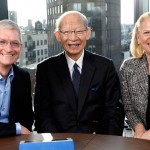How Japan’s Line App turned into A culture-altering, revenue-generating Phenomenon
It is already a powerhouse in messaging, leisure, and merchandise, with funds and extra on the way in which. subsequent cease: the united states.
February 19, 2015
When the young people of Tokyo wish to go on a spree, they head for Harajuku. A fabled wellspring of formative years tradition, the nearby bargains global retail chains on its primary streets and tiny purveyors of bleeding-aspect type in its again alleys. On this Saturday morning in mid-December, a throng of extremely excited twentysomething men and women crowd into the grand opening of a 1,700-sq.-foot keep located across the road from H&M and ceaselessly 21. As they enter the store, they’re greeted by means of two costumed characters: a deadpan undergo and an exuberant rabbit.
This new retailer, known as Line friends, is completely different, to position it mildly. For one factor, it’s now not owned by a retailer however by means of a social media firm called Line, which in lower than four years has develop into Japan’s freshest phenomenon through providing an app that gives free messaging and video and make contact with calls. those characters are two of the cool animated film personalities who live in the app as massive emoji called stickers that Line offers to be used when texting.
The patrons jammed within the story are snapping up a beguiling, bewildering range of items that includes the characters from the stickers. For ¥200 ($1.sixty six) that you may purchase a pad of sticky notes within the shape of that bear, who’s recognized merely as Brown. when you spend ¥390,000 ($three,238), you can take residence a Swarovski crystal-encrusted version of Cony, the rabbit. The test-out queue snakes the entire way down the steps to the some distance corner of the lower stage.
Pop track with squealing, Alvin-and-the-Chipmunks-on-helium vocals pulsates during the aisles:
Stickers…Line!
Message…Line!
group chat…Line!
La, la, la, Line!
fun, enjoyable…Line!
world…Line!
we are…Line!
The song’s gross sales pitch is infectious, but thoroughly useless: everybody in Japan is accustomed to Line, now not simply the busy customers shopping for into the mania this winter morning.
Lower than four years after Line’s launch, the corporate says that greater than 560 million individuals international have registered as contributors, the vast majority of them in Japan, Taiwan, and Thailand. one hundred eighty 1,000,000 customers log in to the line app every month. while that’s a smaller consumer base than WhatsApp (seven hundred million monthly energetic customers consistent with analysis agency Canalys), facebook Messenger (500 million), and Tencent’s WeChat (480 million), Line has accomplished a outstanding job of turning its recognition into a rising, diverse industry.
Its said earnings of $656 million in 2014 comes from a variety of sources that few rivals can match: It sells video games that can be played solo or with different Line users; those digital stickers, which may also be bought to precise a dizzying array of thoughts; advertising and marketing offers with brands and celebrities that wish to reach its person base; and merchandise such as the products on the Harajuku save. meanwhile, fb has yet to spell out the way it intends to generate profits from Messenger or WhatsApp, which it purchased remaining yr for a historical past-making $22 billion.
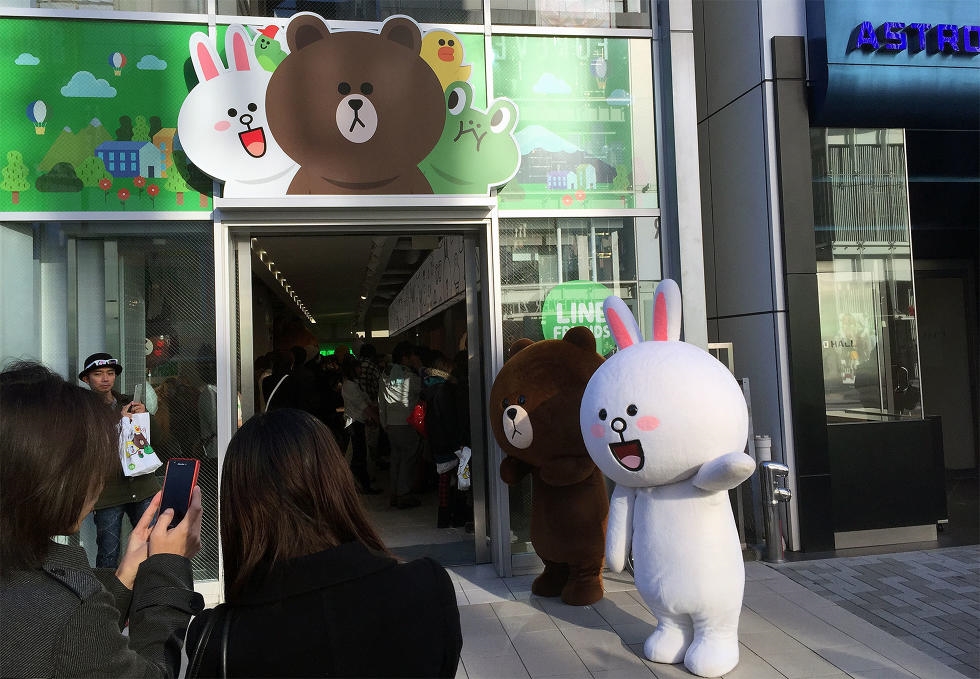
Line stands out for the best way it has used pop culture to show its app right into a full-fledged platform. Its affect is huge. “In Japan, younger folks often swap Line IDs like just a few years ago they’d swap electronic mail addresses or phone numbers,” says Brian Ashcraft, an Osaka-based totally correspondent for gaming site Kotaku and coauthor of japanese Schoolgirl private. The app “is by means of some distance the default form of communication for someone in Taiwan,” says Ben Thompson, who writes about expertise at his Stratechery web site from Taipei. “it will be troublesome to perform right here with out it.”
Secret agent on other passengers within the Tokyo subway, and there’s a more-than-first rate probability that you just’ll spot a salaryman or schoolgirl interacting on their smartphone with Brown, Cony, or one of the vital app’s other hyperlovable mascots. seek advice from a restaurant and a small placard on the cashier invitations you to practice the trade on Line in return for reductions. On billboards, the characters advise chewing gum. talk over with an electronics store and also you’ll to find them in plush kind, as prizes in a coin-operated crane game.
Line is reportedly preparing for an IPO. however it has held off until it can show that it may be as relevant in every single place as it is in Japan. Already, it has 27 million U.S. subscribers signed up, with virtually four million using the carrier often. The question now is simply how a ways this unusual mixture of Disney-meets-Skype-meets-facebook can go.
Start Of An App
Line is headquartered in Shibuya Hikarie, a gleaming high-upward thrust within the heart of Shibuya, the occasions sq.–like hub of commerce established round one of Japan’s busiest educate stations. i am here to satisfy Takeshi Idezawa, who was promoted from COO to CEO of Line Corp. in December 2014. expecting japanese formality, I’ve donned a swimsuit and tie for the get together, but Idezawa is dressed like a Silicon Valley exec, in a collarless gray shirt underneath a gray jacket. The places of work are paying homage to the Harajuku store, with larger-than-lifestyles-dimension figures of Brown, Cony, and their animated compatriots within the corridor. Even the bottled water served on the premises sports Line characters on its labels.
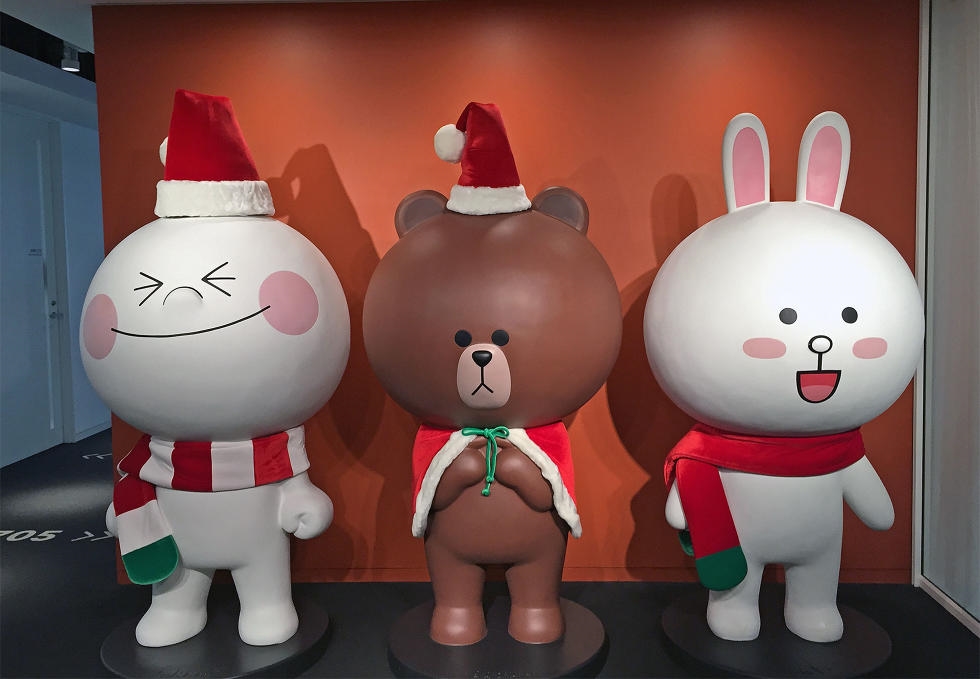
Idezawa tells me Line’s humble origin story, the way it was born from a 3-particular person group within the Tokyo place of job of the Korean web powerhouse Naver (which, among other things, runs Korea’s biggest search engine). The goal: Devise a new business opportunity. The temporary: “It had to be for smartphones,” he says. “number two, it needed to be helpful for verbal exchange.” Tumblr was catching on in Japan on the time, and in the beginning, the workforce noodled round with a photograph-sharing thought impressed via its success.
As the crew was considering its options, catastrophe struck: the worst earthquake ever recorded in Japan, the magnitude-9 Tohoku quake, which hit off the us of a’s coast on March 11, 2011. Landline and wi-fi telephone infrastructure had been overwhelmed, combating individuals from achieving loved ones and confirming that they had been k.
“Even in Tokyo, we were not ready to use cellphones,” Idezawa remembers. “It was actually a devastating state of affairs.” The internet, alternatively, held up reasonably neatly. folks grew to become to social networks comparable to Twitter to stay involved. but such services additionally turned into breeding grounds for rumors concerning the quake and its aftereffects.
Seeing each the promise and pitfalls of social networking led the workforce to make a decision that its new app must emphasize personal, one-to-one conversation. Line went live to tell the tale June 23, 2011. (Naver spun off Line into a completely owned subsidiary in 2013.)
the market for apps that permit users send text messages to family and friends without paying a wi-fi carrier’s per-message charges was exploding, especially in Asia. but Line’s unique incarnation didn’t stand out from the %. “The turning level,” Idezawa says, “was once after we released stickers.”
Laptop customers started injecting visual self-expression into their messages in the Nineteen Eighties with emoticons similar to :-), ;-), and :-O. Emoji, which originated in Japan in the Nineteen Nineties, improved on emoticons by means of being totally graphical, covering an array of emotional states, and together with useful concepts comparable to a wrapped reward, a cocktail, and a smiling pile of poop. Line had emoji aplenty, however its stickers upped the ante additional via being sufficiently big to indicate a whole persona who can be depicted doing virtually anything.
In retrospect, it’s superb that nobody in Japan came up with them lengthy ahead of Line did. the japanese call cuteness kawaii, and to find it notably significant. “The word ‘kawaii’ in eastern literally method ‘suitable of affection’ or even ‘possible to love,’” explains Kotaku’s Ashcraft, who says that it’s used to confer with everything from babies to canine to garb. Kawaii imagery is “used to soften issues, making them extra palatable and even more pleasant. that is a the reason for this is that it can be not unusual to peer cute characters in the whole thing from public security posters to house-loan brochures.”
Line’s stickers exude kawaii. additionally they effectively categorical emotions that would be tough to sum up in text tapped out on a smartphone. And eastern shoppers straight away embraced them as a type of conversation. The app had taken nearly four months to seek out its first 2 million users, however shortly after the introduction of stickers in October 2011, it brought some other million recruits in just two days. Now its customers ship on the subject of 2 billion stickers a day.
Cast Of Characters
Line’s first decal famous person was Moon—pretty much a genderless smiley face that had emerged from the primordial ooze and sprouted a torso, arms, and legs. The critter developed into a personality who’s for sure male; befitting his emoticon-ish origins, he’s usually more than happy, very unhappy, or very angry. Cony is a feminine rabbit, most often present in a manic good temper; Brown the bear, against this, wears the identical unruffled expression at all times, giving him a certain extraordinary dignity. amongst their buddies are James, a younger man with a mane of blond hair and a passionate hobby in his own just right appears to be like, and Boss, a balding, pot-bellied gent who is, neatly, a boss.
Idezawa says that the company chose the solid of characters who become synonymous with its app handiest after conducting in depth focus-group analysis. but he additionally says that the ones that the company made up our minds to go with were, on reasonable, the least popular amongst customers, store one workforce: highschool women, Japan’s strongest tastemakers. “They spent about an hour speaking about these characters,” he remembers. “It was a in reality hot dialogue.”
Despite their cherubic appearance, these characters are explicitly adults, and a part of their attraction is that they appear to have lives beyond their existence as mere items of digital content material. Cony and Brown, for example are romantically concerned: One decal set displays them going out to dinner, shopping for a purse, looking at a 3-D film, and—whats up Kitty this isn’t—mendacity in mattress together. “Moon’s weight loss program unique” bargains photography of him doing sit down-u.s.and dolefully looking at a plate of greens. A p.c. of James stickers includes one depicting the on a regular basis ebullient fellow unshaven and napping in front of the tv with empty cans at his ft, suggesting a uncommon moment of personal obstacle.
Then there’s Line Offline: Salaryman, an animated television sitcom similar to The office and set at Line headquarters, the place even Moon wears a collared shirt, necktie, and slacks. (On my flight on Japan’s ANA airline from San Francisco to Tokyo, the in-flight entertainment included an episode wherein he steals Cony’s snack from the kitchenette fridge and lives to feel sorry about it.)
Because of the line stars’ vivid personalities, people bond with them in a method that they don’t with emoticons or emoji—or with stickers from different apps that cribbed the function after it took off on Line, reminiscent of fb. “Stickers like Cony and Brown are enjoyable to use because they have a variety of emotions, with out many boundaries,” says Melissa Palacios, an artist in San Francisco whose own decal that includes a tabby named Tora used to be not too long ago voted highest decal in the Universe by using Line users. “someone can see a little bit little bit of themselves in them.”
Customers send as regards to 2 billion stickers a day, and Line repeatedly adds new ones, ceaselessly in digital units which can be offered free of charge or for purchase with Line’s digital cash, which customers can purchase or accumulate by means of successful on-line games. There’s additionally a bevy of licensed homes now to be had as sticker units, starting from Snoopy to Elmo, doctor Who, and local favorites good day Kitty and Doraemon.
Ultimate April, Line opened up a Creators Market that lets anyone design and submit stickers. Line flippantly curates the entries—no intercourse, no violence, nothing unlawful or sacrilegious—and then offers the ones it approves for downloading. Creators can make a selection to provide them free of charge or with a price ticket attached. the corporate splits income with artists 50-50.
The Creators Market grew out of the corporate’s attention that its body of workers of sticker artists in Tokyo might never keep up with the desires of its increasingly global audience. “We actually needed local folks to specific their very own emotions in their own means, not simply the japanese manner,” says Naotomo Watanabe, supervisor of Line’s sticker industry planning crew, “And we wished to widen up the ways of expression.”
This nod towards globalization has impressed creators from one hundred forty five international locations to make 30,000 sticker packs in seven months. customers sold a complete of 1.four billion of those stickers in that length, for a gross of about $30 million.
Beyond Stickers
Stickers are Line’s second-biggest income, however they fuel the rest of the company’s industry. Line’s relationship with Disney illuminates how this works. the 2 firms first labored collectively when Line licensed Mickey Mouse for a sticky label percent in 2012. greater than 50 other packs have adopted, that includes characters from Disney cartoons and Pixar, marvel, and megastar Wars classics. “because we have been having a lot success around stickers, we decided to talk about what else Disney and Line can be doing collectively,” says Jimmy Pitaro, president of Disney Interactive. “That conversation very quickly revolved round gaming.”
Line, like Tencent, identified early the potential for the usage of its messaging platform to market and distribute video games. the company entered gaming in July 2012; its first four titles included Line Pop, a game which is eerily similar to Bejeweled or sweet Crush Saga aside from that it involves matching tiny Line-persona heads instead of gem stones or sweets.
Now games present the vast majority of Line business enterprise’s revenue. As with most popular cellular games, Line’s are free to play, with the method to fork over cash to progress more rapidly than it’s essential via raw talent. For Line, the challenge is to keep the hits coming: In January 2015, Naver’s stock tumbled when its income neglected estimates and the corporate mentioned that Line Rangers, a sport featuring the characters as superheroes, used to be slipping in popularity.
As Disney and Line talked, the director of the Disney retailer in Japan was already within the means of launching Tsum Tsum, a kawaii-to-the-max model of such Disney characters as Mickey, stitch, and Winnie the Pooh that renders them as pillow-like blobs. “We determined to combine these two ideas,” Pitaro recollects, and Disney worked with Line to improve a recreation featuring the Tsum Tsum characters and launch these plush toys in its outlets.
The game, referred to as Line: Disney Tsum Tsum, is a blockbuster. It debuted in Japan on January 29, 2014, and by using the top of the year, it was a prime-five download in jap app shops. “Tsum Tsum has grown faster than any of us will have imagined,” Pitaro says. Disney has additionally said that it sold almost 2 million plush toys in Japan. Line’s executives, says Pitaro, “are very sensible businesspeople fascinated by a great creative expertise that may monetize.”
Merchandise that includes Line’s personal characters is now a massive industry for the company, however Idezawa admits that he didn’t see that revenue movement coming. It most effective passed off to him when he took a business trip to Taiwan and used to be startled to look Brown and Cony on products there—all pirated. quite than being ticked off over the theft of Line’s mental property, he says, “I interpreted that as demand from the users.” Upon his return, he started doing deals for respectable tools.
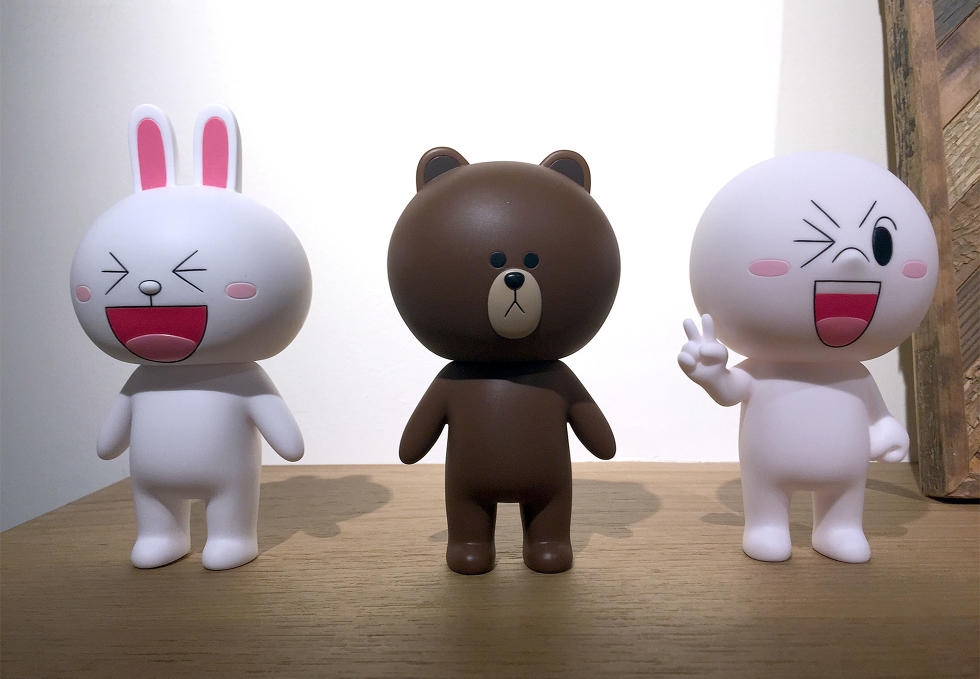
This resulted in the corporate’s own Line friends outlets, which commenced with a short lived pop-up place in Seoul in January 2013. different limited-time retail outlets have popped up considering in Kuala Lumpur, Jakarta, Hong Kong, Beijing, and different locations, along with three permanent tales in Korea, one in Taipei, and the new Harajuku region.
Unlike conventional persona products, including a lot of the line merch offered in other places, some of the goods offered in Line chums stores successfully cater to grown-up tastes and desires. along with the Swarovski cut-glass figures, Line is working with different upscale companions corresponding to Swedish paper-goods producer Bookbinders Design and Finnish housewares maker Muurla. The latter has manufactured 250,000 Line objects to date, including enamelware mugs, glass plates, and wooden trays, displayed in a portion of the Harajuku store that looks like a Line-themed Crate & Barrel. “during the advance of the undertaking, Line just about tripled the dimensions of the original order, so I guess they like the product line,” says Jussi Iota, Muurla’s chief operating officer.
Pay To Play
Line is also placing rising emphasis on some other trade possibility rife with potential: selling get right of entry to to its customers. unlike Silicon Valley–born social networks such as fb, Pinterest, and Twitter, which let corporations take part free of charge and then try to sell them commercials, Line fees for reputable accounts on the carrier. If a business or celebrity desires to blast out messages to its followers, that too entails a payment, as does giving customers the ability to respond. So do backed decal packs.
Everyone from equipment Kat and KFC to the prime minister’s reputable residence finds the proposition to be profitable. After Toyota airs a brand new industrial in its Toyotown campaign, for instance, it could apply up via providing its 14.three million Line followers stickers featuring AKB48, an insanely common japanese girl group with (finally count) 187 members. The automaker will get its message out; consumers get free stuff; Line will get paid. everyone’s satisfied. reliable bills and merchandise make up the remainder of Line’s revenue mix.
The fact that these business missives exhibit up in the same flow as private chats (and only after a Line person has chosen to apply a model or particular person) provides them the next profile and higher experience of urgency than different varieties of social marketing equivalent to fb commercials and Twitter’s promoted tweets. “It’s like unsolicited mail,” says Stratechery’s Thompson. “That’s part of advertising that very few folks be aware of, however it’s tremendous-effective. A model will get a right away connection to the buyer. It’s very powerful, and ultimately it has the potential to be very compelling.”
Reputable account holders may additionally use a provider that Line launched in February 2014 known as business connect to construct their very own automatic consumer experiences. for instance, Japan submit, the japanese mail provider, created a carrier that lets Line users send pictures that it turns into printed New year’s playing cards and supplies by the use of snail mail. ultimate August, the japanese online dealer SBI Securities introduced inventory buying and selling in the app. Line CEO Idezawa envisions even essentially the most mundane transactions, comparable to an insurance coverage firm’s customer enhance, being taken care of by means of Line—with it amassing funds along the way in which.
Recent months have considered the company announce so many extensions of its brand that it’s hard to maintain up. more sorts of content material are on their way, including streaming song: In December, the corporate acquired a provider known as MixRadio from Microsoft, which had ended up proudly owning it when it bought Nokia’s instrument operations.
But quite than being merely digital, lots of Line’s new services and products involve a real-world facet. Line Wow, provided in collaboration with a Korean company and on hand in the beginning handiest in Line’s personal regional of Shibuya, is a meals supply provider, with plans to provide different varieties of merchandise one day. Line Taxi, launching first in Tokyo, allows you to name a cab. Line Maps for Indoor is a smartphone app that lets shoppers navigate their manner round shops and malls. In Thailand, the company is Line Pay is a new fee service that the corporate says will in the end fortify offline retail purchases (like Apple Pay or Google pockets) and particular person-to-person cash transfers (like PayPal).
Line, in different words, intends to leverage its energy in messaging to turn into a sprawling, all-encompassing consumer platform. “we all know what we want to do,” says Idezawa topic-of-factly. “Our intention is to change into No. 1 within the smartphone container.”
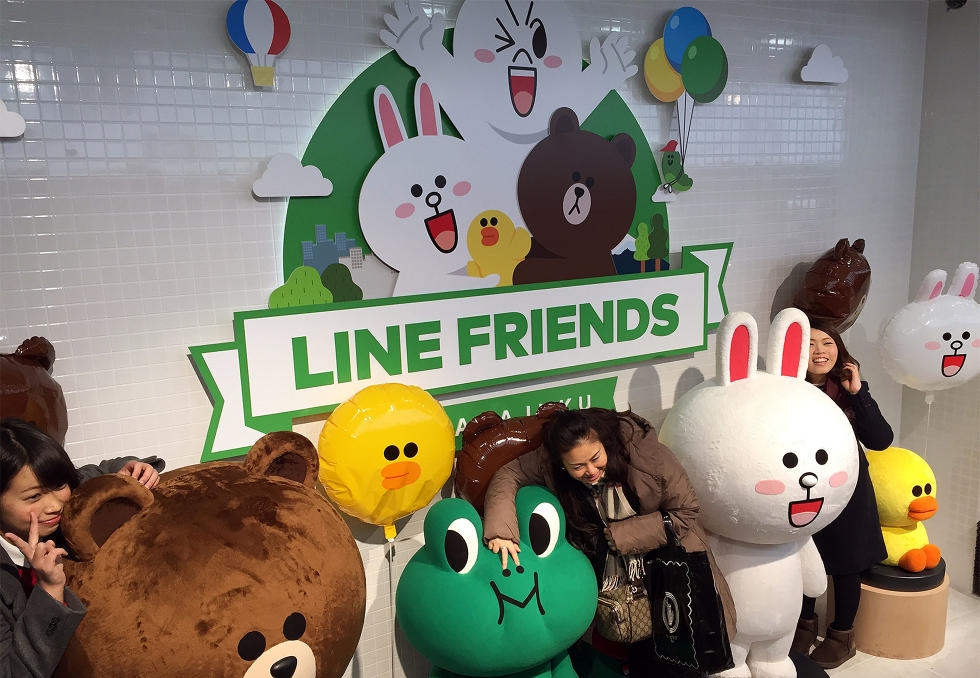
Looking at everything Line is making an attempt to roll out, you must come to the conclusion that the corporate is indulging in risky, hubristic overreach. Or you might want to find it unbelievable that an app that started out to be able to avoid deciding to buy textual content messages and make contact with calls is pursuing so many different sources of earnings.
Thompson for one is impressed by the way in which that Line is turning communications into commerce: “Line owns the whole enchilada. They own the phase that lets you understand one thing is to be had. and they personal the one thing.” only Tencent’s WeChat is pursuing a similar way with the rest like the identical success, he says.
World Aspirations
Line has a long way to go ahead of it is going to succeed in its most audacious targets. And it can be already so pervasive in its key markets that there don’t seem to be many users left to sign up. in reality, some Line watchers are already wondering whether or not there are indicators that its growth is slowing.
To head to the subsequent stage, the corporate will need greater than lovable new features; it will need world scale. Idezawa emphasizes that what works in Japan would not necessarily work far and wide. “totally different regions have completely different cultures,” he says. “once we localize, we truly have to peer what’s occurring and check out to swimsuit their wants.”
Localization is a novel concept in messaging. Tencent offers two variations of its widespread messenger—Weixin in China and WeChat in the remainder of the sector. but only Line has thought about how it must tailor its provider in every u . s . a . it enters. a few of these moves can be rather simple. within the Italian model of Line, as an example, Moon adopts a basic local gesture when he flicks his fingers under his chin to indicate “I don’t care.”
There’s arguably no other Western country that suggests more to Line’s future than the U.S., however the firm hasn’t rushed into the market. The 27 million registered contributors it has is a meager share of american citizens in comparison with Line’s saturation in its prime countries. (in line with comScore, fb’s Messenger app had 70.4 million active customers a month in the U.S. in November 2014—way over any other communications app, and more than 18 times as many active users as Line.)
The high architect of Line’s American technique is Jeanie Han, CEO of a gaggle that the company calls Line Euro-Americas. primarily based on the firm’s los angeles administrative center, Han is a bubbly Korean-American with a PhD in advertising who spent a decade as an govt at Paramount pictures before she joined Line in 2012. Han admits that in the first place she used to be worried that Westerners wouldn’t bond with Line’s spirit. however when she launched Line in Spain in 2013, she found out that “Cony and Brown are essentially the most downloaded sticky label packs within the app. so that they’re not too Asian.” according to Canalys, Spain is now Line’s fourth greatest us of a, with 20 million registered users. “given that the inhabitants of Spain is about forty seven million, that is an unbelievable statistic,” says Joe Kempton, a Canalys analyst.
Still, some westernization has been required. for example, her L.A.–based totally design crew hired one artist, Dan Woodger, to crank out 1,000 new emoji in a ten-week sprint. It was an strangely collaborative effort, Woodger says: each and every week, “Line would come up with 60 [emoji] that they wanted, and that i was free to come up with forty. plenty of the time, you must get issues signed off by using 10 individuals, but they have been very open.”
The more American manufacturers take discover of Line, the more American the app will feel. for example, a company called bare Tree Media is working with companions such as the NFL avid gamers association and the producers of the Sharknado tv motion pictures to create content material with stateside attraction. “we adore lovely stickers, however we also love something that could be edgier, or extra appropriate for a 25-yr-old guy to ship versus a 16-yr-old girl,” says bare Tree founder and CEO Robert Ferrari, who as soon as helped manage hello Kitty’s career at Sanrio.
Famous person appeal
In the U.S., Han is also tempering kawaii with an important dollop of pop track. thus far, the U.S. model of Line comprises simplest a smattering of respectable money owed, however among them are Katy Perry, Taylor Swift, Sir Paul McCartney, and the participants of Linkin Park and Maroon 5.
“Of the entire messaging apps in this area, Line has probably the most soul,” says Kavi Halemane, government VP and head of digital on the Collective, Linkin Park’s administration firm when the band joined Line remaining year. With nearly four million followers for its English-language reputable account, it is closing in on its Twitter audience (if you happen to add in Linkin Park’s eastern-language reputable account, it has extra Line lovers than Twitter followers). Cofounder Mike Shinoda, a former art student, even helped create a sticky label % that includes cartoony versions of himself and his bandmates. “Soul is just not a technical term, however once I’m using the app, i will see why it’s been successful up to now,” Halemane says.
Taylor Swift has almost six instances as many followers on Twitter than the eight.4 million she has on Line. however she automatically receives extra likes for her posts on Line than for the same objects on Twitter, suggesting that Line users are an surprisingly engaged bunch. Swift additionally posts brief audio notes that convey up in her Line followers’ chat inboxes, as if they came from a pal—a function without a counterpart on Twitter. “She’s super-proficient, tremendous-authentic, super-authentic,” says Jae Hyung Kim, head of strategy and operations for Line Euro-Americas. “And doing little issues like that really, in point of fact resonates with her users.”
Han has extended its connection with pop tune by the use of a maintain IHeartMedia, the radio large formerly referred to as Clear Channel. IHeartMedia first created Line legitimate bills for its broadcast personalities in San Diego, then promoted them on the air. “inside six months in San Diego, our Line followers surpassed our followers that had been linked with us via facebook, Instagram, and Twitter blended,” says Michael Preacher, iHeartMedia’s VP of strategic partnerships. With just about 750,000 San Diegans now following its Line accounts, the corporate has multiplied this system to its two greatest markets, new york and L.A.
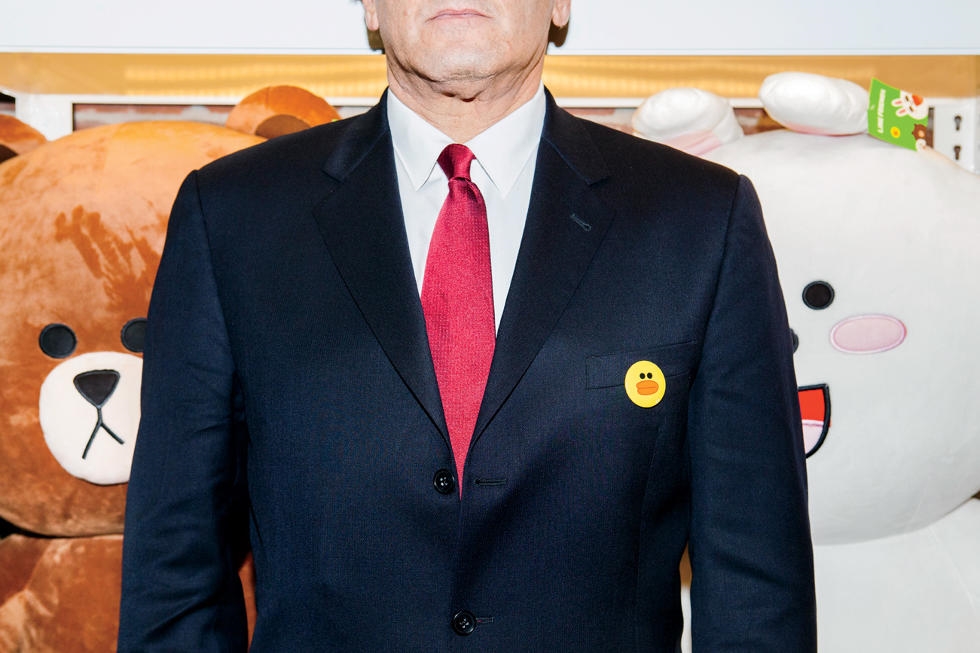
Phase 2 of Han’s U.S. launch came in December when she opened a pop-up Line friends store in the big apple’s instances square, throughout the road from a Disney retailer the place kids and their moms are grabbing Tsum Tsum dolls off the shelves. just like the U.S. version of the app, Line chums NYC been rejiggered for local tastes: The T-shirt section is correct up entrance, and there’s extra of an emphasis on reductions. Han says that the early receipts from instances sq. are the very best Line has considered at any of its stores.
Opening even a short lived Line retailer in the U.S. is as a lot about making a commentary as chasing a right away industry probability. “I’m certain Asian tourists will acknowledge our characters, and so they’ll line up out of doors the door to purchase our products,” Han says. (Subsequent visits to the line pals pop-up proven her hypothesis.) “but through that, it will be very symbolic for americans to see that our brand has arrived.”
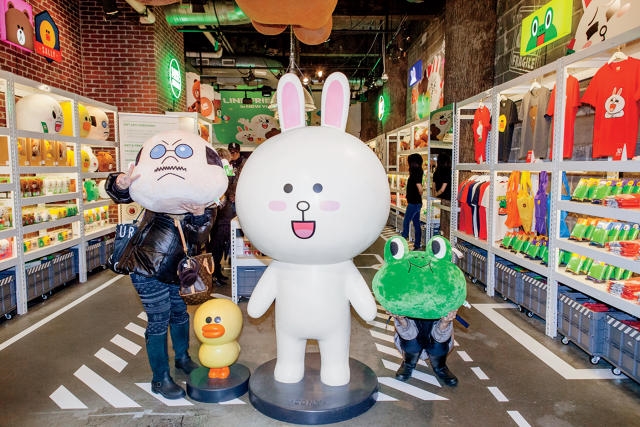
A still larger signal that Line has arrived could also be a brand new piece of instrument in the iPhone and Android app retailers. Its title is Stickered, and it allows you to embellish photos with stickers—very very like a Line app called Line camera. Its publisher? fb, whose radar for potential threats is finely tuned.
Idezawa denies that Line sees facebook as competitors: “in fact they do some messaging, but principally they’re more open, while we are more closed and personal,” he tells me. nonetheless, there’s no greater validation of a new social behavior than Mark Zuckerberg paying attention to an innovation and cloning it.
the adaptation is that facebook’s stickers really feel like a sideline, now not a core function. They make no effort to match the attraction and humor of Line’s cast of characters. Mimicking another app’s features could also be simple, but stealing its soul shouldn’t be.
Additional reporting by Matt McCue. A version of this text seemed within the March 2015 problem of fast firm magazine
[photograph: Jeff Brown, location: PLAY café/bar/lounge, Museum of intercourse, NYC; prop styling: Bednark Studio]
(798)












